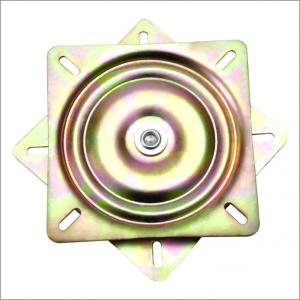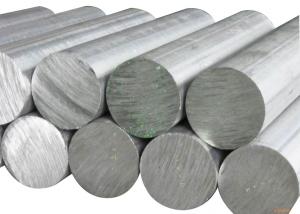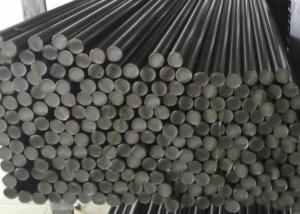Special Steel SKD11 Cold Working Die Steel Plate
- Loading Port:
- China main port
- Payment Terms:
- TT OR LC
- Min Order Qty:
- 25 m.t.
- Supply Capability:
- 10000 m.t./month
OKorder Service Pledge
OKorder Financial Service
You Might Also Like
Item specifice
Chemical Composition(%)
| Country | Standard | C | Si | Mn | Cr | Mo | V | S | P | Other |
| China(GB) | Cr12Mo1V1 | 1.40-1.60 | ≤0.60 | ≤0.60 | 11.0-13.0 | 0.70-1.20 | ≤1.10 | ≤0.030 | ≤0.030 | Co≤1.00 |
| USA(ASTM) | D2 | 1.40-1.60 | 0.30-0.50 | 0.30-0.50 | 11.0-13.0 | 0.70-1.20 | 0.8 | ≤0.025 | ≤0.025 | Co:0.60 |
| Germany(DIN) | 1.2379 | 1.50-1.60 | 0.10-0.40 | 0.15-0.45 | 11.5-12.5 | 0.60-0.80 | 0.90-1.10 | ≤0.030 | ≤0.030 | - |
| Japan(JIS) | SKD11 | 1.40-1.60 | ≤0.40 | ≤0.60 | 11.0-13.0 | 0.80-1.20 | 0.20-0.50 | - | - | Ni≤0.50 |
Available Size
| Rolled flat steel | 12-90mm×205-610mm×L |
| Forged flat steel | 100-300mm×400-600mm×L |
Characterstics
| 1.High hardening ability and quench-hardening performance | ||||||
| 2.High abrasive resistance | ||||||
| 3.Good oxidation resistance at elevated temperatures | ||||||
| 4.Less deformation after heat treatment |
Applications: suitable for various complicated cold working dies with high precision and long lifetime,such as punching dies,cold extrusion dies,thread rolling dies,screw plates,cold extrusion dies,and precise measuring devices
Product show:
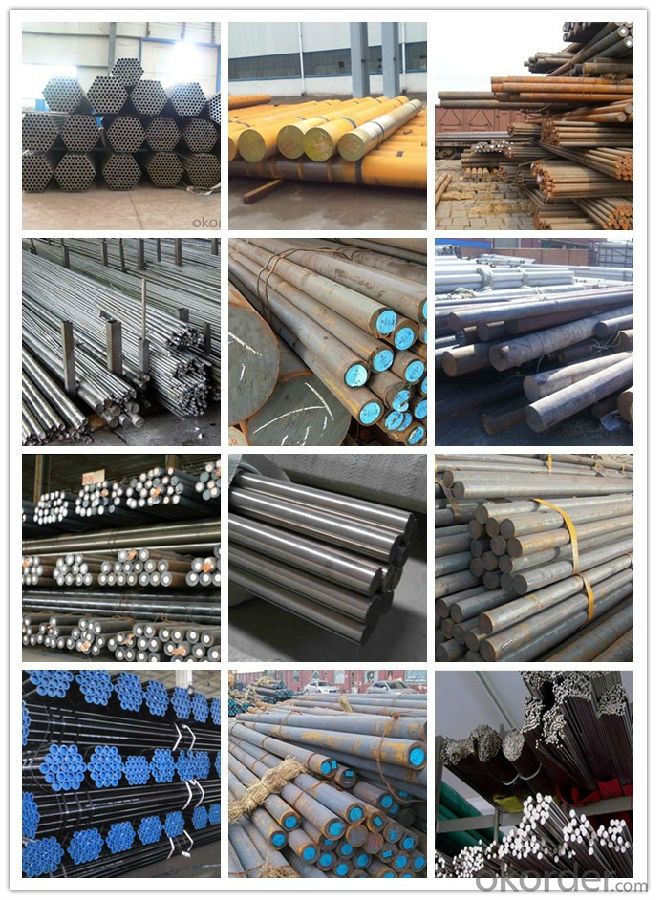
Workshop show:
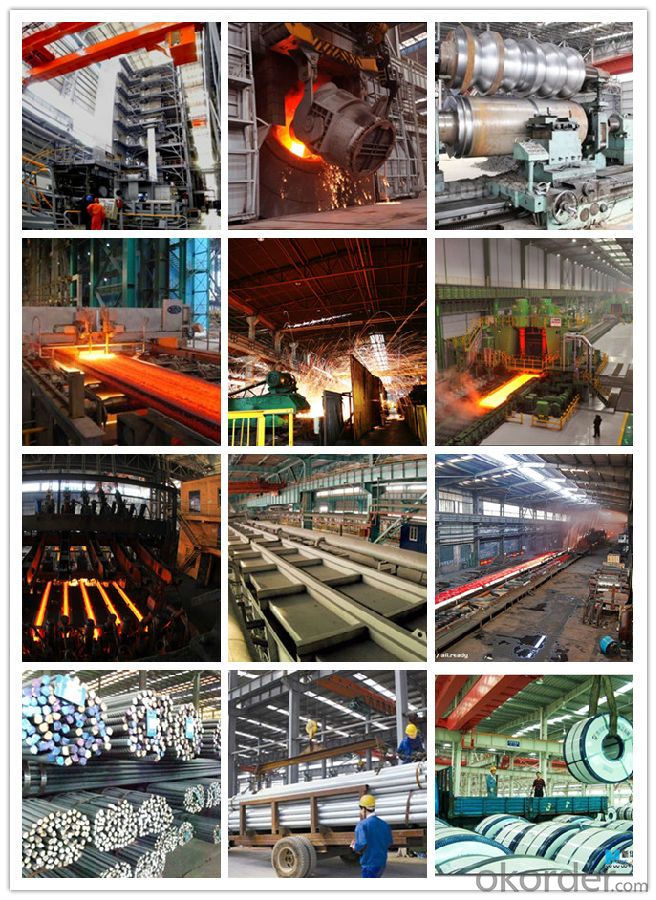
FAQ:
1, Your advantages?
professional products inquiry, products knowledge train (for agents), smooth goods delivery, excellent customer solution proposale
2, Test & Certificate?
SGS test is available, customer inspection before shipping is welcome, third party inspection is no problem
3, Payment Terms?
30% TT as deposit and 70% before delivery.
Irrevocable L/C at sight.
4, Trading Terms?
EXW, FOB, CIF, FFR, CNF
5, After-sale Service?
We provides the services and support you need for every step of our cooperation. We're the business partner you can trust.
For any problem, please kindly contact us at any your convenient time.
We'll reply you in our first priority within 24 hours.
- Q:What are the different surface treatments used for special steel?
- There are several surface treatments commonly used for special steel, including galvanization, nitriding, carburizing, and plating. Galvanization involves applying a protective zinc coating to prevent corrosion. Nitriding is a heat treatment process that enriches the surface of the steel with nitrogen, enhancing hardness and wear resistance. Carburizing involves introducing carbon into the steel's surface, creating a hardened layer. Plating, on the other hand, involves covering the steel with a thin layer of another metal, such as chrome or nickel, for improved aesthetics and corrosion resistance.
- Q:How does special steel contribute to the automotive fuel efficiency?
- Special steel contributes to automotive fuel efficiency in several ways. Firstly, it allows for the construction of lighter and stronger components, such as the body frame and engine parts, which reduces the overall weight of the vehicle. A lighter vehicle requires less energy to accelerate and maintain speed, resulting in improved fuel efficiency. Secondly, special steel can be used to manufacture components with higher precision and tighter tolerances, minimizing friction and energy loss within the engine and drivetrain. Additionally, the use of special steel in exhaust systems helps to improve the efficiency of emissions control technologies, reducing the environmental impact of the vehicle. Overall, special steel plays a crucial role in enhancing fuel efficiency by enabling the production of lighter, stronger, and more efficient automotive components.
- Q:What are the challenges in machining special steel alloys?
- Machining special steel alloys poses several challenges due to their unique properties and characteristics. One of the primary challenges is their high hardness. Special steel alloys are often heat-treated to enhance their mechanical properties, resulting in increased hardness. This makes it difficult to machine them as traditional cutting tools may wear out quickly or become dull. The high hardness also increases the risk of tool breakage, leading to frequent tool changes and increased production downtime. Another challenge is the presence of abrasive elements in special steel alloys. Some alloys contain elements like chromium, tungsten, or vanadium, which can cause rapid tool wear and degradation. These abrasive elements can cause excessive tool wear, leading to reduced cutting tool life and increased machining costs. Moreover, the presence of these elements can result in poor surface finish and dimensional accuracy if not properly managed during the machining process. Special steel alloys also tend to have low thermal conductivity, which makes it difficult to dissipate heat generated during machining. This can lead to high temperatures at the cutting zone, resulting in thermal expansion and distortion of the workpiece. The heat can also affect the cutting tool, reducing its life and efficiency. Managing the heat generated during machining is critical to prevent workpiece deformation and maintain dimensional accuracy. Furthermore, the presence of alloying elements can make these steel alloys prone to work hardening. This means that the material becomes harder and more difficult to cut as the machining process progresses. Work hardening can lead to increased cutting forces, tool wear, and reduced surface finish. To overcome this challenge, machining parameters such as cutting speed, feed rate, and depth of cut must be carefully optimized to avoid excessive work hardening. In conclusion, machining special steel alloys presents challenges such as high hardness, abrasive elements, low thermal conductivity, and work hardening. Overcoming these challenges requires the use of specialized cutting tools, efficient cooling and lubrication systems, optimized machining parameters, and careful selection of machining strategies. By addressing these challenges effectively, manufacturers can achieve accurate and efficient machining of special steel alloys.
- Q:How does special steel perform in cryogenic wear resistance?
- Special steel is renowned for its outstanding performance in resisting wear and tear in cryogenic environments. When exposed to extremely low temperatures, special steel retains its strength, hardness, and durability, rendering it highly resistant to wearing and friction. This is particularly vital in applications involving cryogenic settings, such as those found in the aerospace industry or in superconductor production. The distinct composition and processing techniques employed in special steel enable it to withstand the challenges posed by cryogenic conditions. It showcases superior toughness, ensuring that it does not become brittle or susceptible to cracking when subjected to low temperatures. Furthermore, the steel's microstructure remains stable, preventing any significant alterations in its mechanical properties when exposed to extreme cold. Moreover, special steel is frequently subjected to various surface coatings or heat treatments to further enhance its resistance to wear. These treatments generate a protective layer or alter the steel's microstructure, thereby reducing the likelihood of wear and prolonging its lifespan in cryogenic environments. To summarize, special steel excels in resisting wear and tear in cryogenic conditions due to its ability to maintain strength, hardness, and durability at extremely low temperatures. Its exceptional toughness, stable microstructure, and potential for surface treatments make it the preferred choice for applications that demand reliable performance in cryogenic settings.
- Q:How are magnesium alloys used in lightweight structures?
- Magnesium alloys are used in lightweight structures due to their exceptional strength-to-weight ratio. They are commonly employed in the aerospace industry for constructing aircraft components, such as fuselage frames, wings, and engine parts. Additionally, magnesium alloys find applications in automotive manufacturing, where they contribute to reducing the weight of vehicles, thus enhancing fuel efficiency. These alloys are also utilized in the production of portable devices, sporting equipment, and other products that require a combination of strength and lightness.
- Q:What are the main characteristics of alloy steel forgings?
- Alloy steel forgings possess several key characteristics that make them highly desirable in various industries. Firstly, alloy steel forgings are known for their exceptional strength and durability. The inclusion of different alloying elements, such as chromium, nickel, molybdenum, and vanadium, enhances the steel's mechanical properties, making it resistant to wear, fatigue, and corrosion. Another important characteristic of alloy steel forgings is their versatility. These forgings can be customized to meet specific requirements, whether it be in terms of shape, size, or performance. This adaptability allows for the production of complex and intricate components that are often used in critical applications, such as aerospace, automotive, and oil and gas industries. Additionally, alloy steel forgings exhibit excellent heat resistance and can withstand extreme temperature fluctuations without losing their structural integrity. This property is particularly beneficial in applications where components are exposed to high temperatures or rapid temperature changes, such as gas turbines, boilers, and heat exchangers. Furthermore, alloy steel forgings offer superior machinability and weldability, making them easier to work with during the manufacturing process. This characteristic allows for precise shaping, forming, and machining of the forgings, enabling manufacturers to achieve intricate designs and tight tolerances. Lastly, alloy steel forgings are known for their cost-effectiveness. Despite their exceptional properties, alloy steel forgings can be produced in large quantities, resulting in economies of scale. This makes them a cost-efficient choice for various industries looking to balance performance, durability, and affordability. In summary, the main characteristics of alloy steel forgings are their exceptional strength, durability, versatility, heat resistance, machinability, weldability, and cost-effectiveness. These qualities make alloy steel forgings a preferred choice for applications requiring high-performance components that can withstand challenging conditions.
- Q:What are the properties of structural steel?
- Structural steel possesses various properties that make it ideal for construction purposes. It has high strength-to-weight ratio, meaning it can support heavy loads while being relatively lightweight. Steel is also ductile, allowing it to be easily shaped and formed into various structural elements. Additionally, it exhibits excellent durability and resistance to corrosion, making it suitable for long-lasting structures. Moreover, structural steel is fire-resistant, providing enhanced safety in case of a fire. Overall, these properties make structural steel a highly versatile and reliable material in the construction industry.
- Q:How does special steel contribute to the automotive safety?
- Special steel contributes to automotive safety in several ways. Firstly, it is used in the construction of the vehicle's structure, providing strength and rigidity to withstand impacts and collisions. This helps to protect the passengers by minimizing the deformation of the cabin area during a crash. Secondly, special steel is also used in the manufacturing of critical automotive components such as airbags, seat belts, and anti-lock braking systems, which are vital for occupant protection and accident prevention. Additionally, special steel is resistant to corrosion, which ensures the longevity and durability of safety features in a vehicle. Overall, the use of special steel in the automotive industry plays a significant role in enhancing the safety standards of vehicles and protecting the lives of both drivers and passengers.
- Q:How is special steel used in the construction manufacturing process?
- Special steel is used in the construction manufacturing process for its unique properties such as high strength, durability, and resistance to corrosion. It is commonly used to fabricate structural components, reinforcement bars, and other critical elements in buildings, bridges, and infrastructure projects. Additionally, special steel alloys are utilized in the production of specialized tools and machinery used in the construction industry.
- Q:What are the applications of corrosion-resistant steel?
- Corrosion-resistant steel, also known as stainless steel, has a wide range of applications due to its ability to resist rusting and corrosion. It is commonly used in industries such as construction, automotive, aerospace, and food processing. Corrosion-resistant steel is used to make structural components, pipelines, tanks, and equipment that are exposed to harsh environments or substances. It is also utilized in architectural elements, household appliances, and medical equipment where durability and hygiene are crucial.
1. Manufacturer Overview |
|
|---|---|
| Location | |
| Year Established | |
| Annual Output Value | |
| Main Markets | |
| Company Certifications | |
2. Manufacturer Certificates |
|
|---|---|
| a) Certification Name | |
| Range | |
| Reference | |
| Validity Period | |
3. Manufacturer Capability |
|
|---|---|
| a)Trade Capacity | |
| Nearest Port | |
| Export Percentage | |
| No.of Employees in Trade Department | |
| Language Spoken: | |
| b)Factory Information | |
| Factory Size: | |
| No. of Production Lines | |
| Contract Manufacturing | |
| Product Price Range | |
Send your message to us
Special Steel SKD11 Cold Working Die Steel Plate
- Loading Port:
- China main port
- Payment Terms:
- TT OR LC
- Min Order Qty:
- 25 m.t.
- Supply Capability:
- 10000 m.t./month
OKorder Service Pledge
OKorder Financial Service
Similar products
New products
Hot products
Related keywords

























